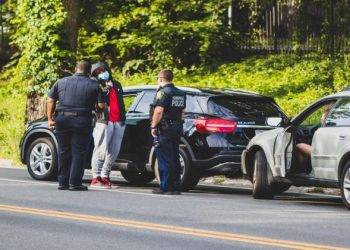What causes rear-end collisions?
Rear-end collisions are not uncommon on roadways and can have disastrous results. Many potential causes of these accidents include distracted driving, sudden stops due to hazardous driving conditions or traffic congestion, tailgating, and impaired driving. In many cases, inattentive drivers might be unaware that the vehicle ahead of them has stopped until it is too late. Alcohol significantly increases the risk of rear-end collisions because of its impairment to cognitive abilities and reduced reaction time. Especially in urban areas with more drivers, rear-end collisions are common and may happen even if all drivers exercise caution.
Who is at fault in rear-end collision?
The question of who is at fault in a rear-end collision can be difficult to answer. Depending on the circumstances, both drivers may bear responsibility for the crash. In many cases, the lead car driver may have performed an unsafe maneuver that led to the accident. Examples of such behavior might include failing to signal before merging or turning, slowing down suddenly without warning, or otherwise not following standard driving codes. On the other hand, the rear car driver will usually be liable if they followed too closely or failed to brake in time due to reckless driving. It is up to whoever chooses to investigate at fault rear end collision to determine who is responsible for what occurred based on the evidence at hand.
How frequent are rear-end collisions?
Rear-end collisions are an unfortunately common occurrence on the roads. According to a recent report from the NHTSA, rear-end collisions account for one-third of all car accident reports in the U.S. Additionally, this type of accident has consistently been one of the most frequent types of crashes nationwide for many years. Further research shows that these accidents often occur due to a driver not paying attention or failing to adapt to changing road conditions and traffic speeds. Those involved in rear-end collisions can suffer from severe and sometimes life-changing effects. Hence, it is vital to take measures when behind the wheel to help reduce their frequency, such as keeping your eyes on the road and leaving room between you and other vehicles.
What happens when the other driver is to blame in a rear-end collision?
Rear-end collisions can be incredibly stressful and devastating for any driver involved. Fortunately, if the other driver is to blame, then you may be eligible for compensation from their insurance company. The best way to prove the other driver is at fault is by speaking to a qualified personal injury lawyer and gathering evidence like eyewitness testimony and photographs of the scene. By pursuing this legal path, you can work towards recovering costs associated with medical bills, car repairs, and lost wages associated with the accident, all of which can be difficult to manage without the help of a professional.
When is the rear vehicle not to blame?
It is not always the case that the rear vehicle is responsible for a traffic collision. If a lead driver slams on his brakes abruptly in heavy traffic, an innocent driver following behind could have no time to react by stopping or swerving out of the way. Additionally, if the rear driver had only been paying attention and driving responsibly but suddenly found himself struggling to steer clear of a pothole created by reckless lead drivers – it can be safely assumed that they are not at fault for any resulting incident. In either case, it would be unfair to put all responsibility on the back-end motorist, so it is vital to examine each situation objectively when assessing who is at fault after an accident.









